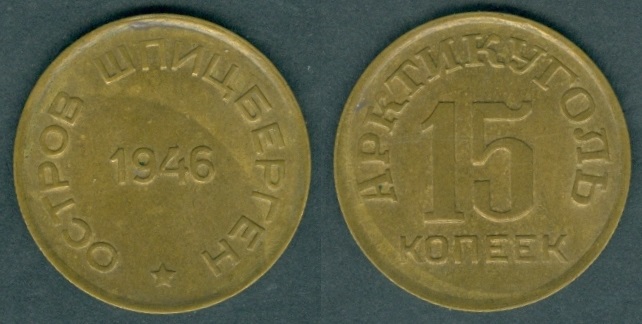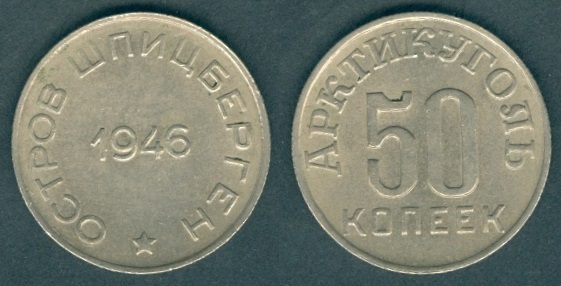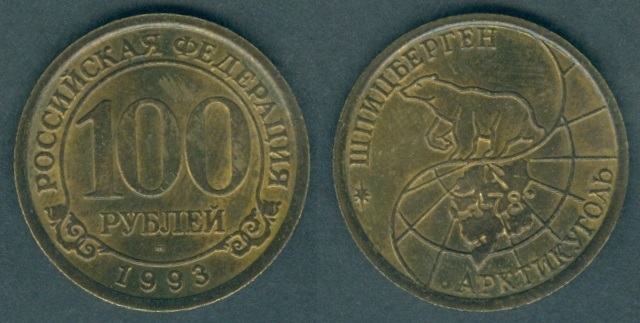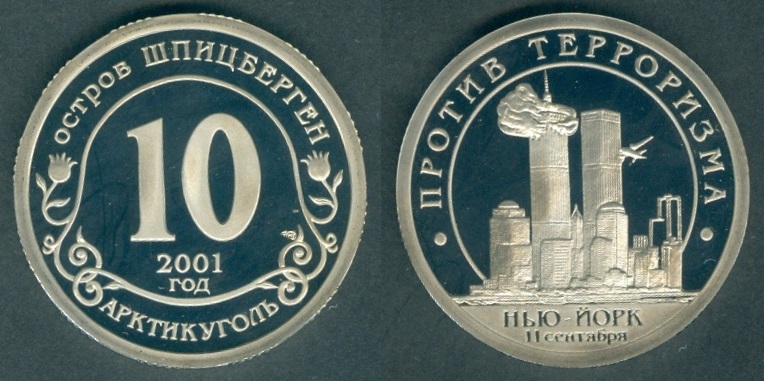 |
 |
| Svalbard (Spitsbergen) | ||||||||||||||||||||
| Svalbard; prior to 1925
known as Spitsbergen, or Spitzbergen (Russian: Шпицберген) is a Norwegian
archipelago in the Arctic Ocean. Situated north of mainland Europe, it is
about midway between continental Norway and the North Pole. The islands of
the group range from 74° to 81° north latitude, and from 10° to 35° east
longitude. The largest island is Spitsbergen, followed by Nordaustlandet and
Edgeøya. While part of the Kingdom of Norway since 1925, Svalbard is not
part of geographical Norway proper; administratively, the archipelago is not
part of any Norwegian county, but forms an unincorporated area administered
by a governor appointed by the Norwegian government, and a special
jurisdiction subject to the Svalbard Treaty that is, unlike Norway proper,
outside of the Schengen Area, the Nordic Passport Union and the European
Economic Area. Since 2002, Svalbard's main settlement, Longyearbyen, has had an elected local government, somewhat similar to mainland municipalities. Other settlements include the Russian mining community of Barentsburg, the research station of Ny-Ålesund, and the mining outpost of Sveagruva. Ny-Ålesund is the northernmost settlement in the world with a permanent civilian population. Other settlements are farther north, but are populated only by rotating groups of researchers. The islands were first used as a whaling base by whalers who sailed far north in pursuit of whales for blubber in the 17th and 18th centuries, after which they were abandoned. Coal mining started at the beginning of the 20th century, and several permanent communities were established. The Svalbard Treaty of 1920 recognizes Norwegian sovereignty, and the 1925 Svalbard Act made Svalbard a full part of the Kingdom of Norway. They also established Svalbard as a free economic zone and a demilitarized zone. The Norwegian Store Norske and the Russian Arktikugol remain the only mining companies in place. Research and tourism have become important supplementary industries, with the University Centre in Svalbard (UNIS) and the Svalbard Global Seed Vault playing critical roles. No roads connect the settlements; instead snowmobiles, aircraft and boats serve inter-community transport. Svalbard Airport, Longyear serves as the main gateway. The archipelago features an Arctic climate, although with significantly higher temperatures than other areas at the same latitude. The flora take advantage of the long period of midnight sun to compensate for the polar night. Svalbard is a breeding ground for many seabirds, and also features polar bears, reindeer, the Arctic fox, and certain marine mammals. Seven national parks and twenty-three nature reserves cover two-thirds of the archipelago, protecting the largely untouched, yet fragile, natural environment. Approximately 60% of the archipelago is covered with glaciers, and the islands feature many mountains and fjords. Svalbard and Jan Mayen are collectively assigned the ISO 3166-1 alpha-2 country code "SJ". Both areas are administered by Norway, though they are separated by a distance of over 950 kilometres (590 miles; 510 nautical miles) and have very different administrative structures. |
||||||||||||||||||||
| Discovery: The first written mention of the name, Svalbard, was in 1194, but it wasn't before 1596 that Willem Barentz officially discovered the archipelago. He was looking for an alternate route to the Far East, but after drifting in thick fog arrived of the coast of Svalbard. He saw an archipelago with countless mountains, glaciers and long, deep fjords that were teeming with whales. While these riches were not of the same worth as the spice markets in the Far East, whales were an important resource in Europe, which needed oil for lamps. In the beginning of the 1600s, an intense whale hunt began, with up to 200 vessels present in the summer season. During the winter, however, Svalbard was an inhospitable icy desert, and it would be over 30 years between its discovery and the first successful over-wintering. In 1630, eight Englishmen were left behind due to a misunderstanding, but managed to survive on old whale meat and leftover blubber, opening people’s eyes to the possibility of a year-round presence on Svalbard. | ||||||||||||||||||||
| Note: Administered by the Polar Department of the Ministry of Justice, through a local governor. By treaty the nationals of the treaty powers have equal rights to exploit mineral deposits, subject to Norwegian regulation. Although U.S., U.K., German, Dutch, and Swedish coal companies have mined in the past, the only companies still mining are Norwegian and Russian. | ||||||||||||||||||||
| Territorial Disputes: Despite recent discussions, Russia and Norway dispute their maritime limits in the Barents Sea and Russia's fishing rights beyond Svalbard's territorial limits within the Svalbard Treaty zone. | ||||||||||||||||||||
| Chronology: | ||||||||||||||||||||
| 1194 First mentioned in Icelandic annals report that "Svalbard found" (Svalbardi fundinn), however there is no scientific consensus that supports this hypothesis and they more likely referred to Jan Mayen. 24 May 1596 Dutch expedition under Jacob van Heemskerck, Willem Barentsz, and Jan Corneliszoon Rijp while trying to find a Northeast Passage discovers Spitsbergen (and Bear Island), while assuming it to be part of Greenland. 1612 Whaling activities commence in the waters around Svalbard accompanied by various ineffective claims of possession (by Denmark, England, France, Netherlands, Russia and Sweden). 1764 - 1766 Failed attempt to find a Northeast Passage led by Vasiliy Yakovlevich Chichagov (b. 1726 - d. 1809) in the waters around Svalbard. 1899 Commercial mining begun by Søren Zachariassen (b. 1837 - d. 1915). 10 Jun 1906 First permanent settlement (Longyear City [from 1925 Longyearbyen], named for founder John Munroe Longyear) established. 26 Jan 1912 To be placed under international administration by draft convention, which is not effected. 14 May 1912 Russia and Norway agree that Spitsbergen Archipelago is to be neutral territory. 30 Nov 1916 Store Norske Spitsbergen Kulkompani (SNSK)(Great Norwegian- Spitsbergen Coal Company) established and begins operations in Svalbard. 09 Feb 1920 Norwegian sovereignty recognized by the Treaty Concerning the Archipelago of Spitsbergen" (by U.S., U.K., Denmark, France, Italy, Japan, Norway, Netherlands, and Sweden [later China 01 Jul 1925, Germany 16 Nov 1925, and Soviet Union 07 May 1935]) (effective 14 Aug 1925). It is known as Svalbard Treaty. 17 Jul 1925 Svalbard Act. 14 Aug 1925 Formal assumption of sovereignty by Norway (by Svalbard Act). 11 Jul 1930 - 31 Dec 1994 Svaldbard governors also the governors of Jan Mayen. 01 Jan 1937 - 31 Dec 1952 Svalbard subordinated the Norwegian Ministry of Trade and Industry. 07 Jun 1940 - 31 May 1945 Administered by the Norwegian government in exile. 03 Sep 1941 Allied forces under Arthur E. Potts (Canada)(b. 1890 - d. 1983) evacuate the population and administration to U.K., mining installations are destroyed. 1941 - 14 May 1942 German occupation 29 Oct 1941 - 24 Aug 1942 German weather station "Knospe" established at Signehamna bay, Northwest-Spitsbergen (withdrawn 24 Aug 1942). Sep 1942 - 1945 Germans continue to establish weather stations at various locations in Svalbard (including stations "Nussbaum," "Kreuzritter," "Svartisen," "Helhus" and "Landvik"). 08 Sep 1943 German battleships Tirpitz and Scharnhorst attack Longyearbyen, Barentsburg and Gruman. Aug 1944 Sveagruva settlement destroyed by German assault. Sep 1944 - 04 Sep 1945 German weather station "Haudegen" established on Nordaustland under Wilhelm Dege (b. 1910 - d. 1979). 12 Nov 1944 Soviet Union requests joint administration of Svalbard and cession of Bear Island (again Nov 1946 and Jan 1947), which is rejected by Norway (by parliament on 15 Feb 1947). 01 Jan 1953 Svalbard subordinated to the Ministry of Justice. 01 Nov 1971 Svalbard Council established, parties are allowed to run for election from 1993. In 2002, the Longyearbyen Community Council replaces the Svalbard Council. 01 Jul 2002 The Svalbard Environmental Act of 15 June 2001 implemented. |
||||||||||||||||||||
|
|
||||||||||||||||||||
| Island of Spitsbergen (also spelled Spitzbergen, a.k.a. Svalbard). | ||||||||||||||||||||
|
||||||||||||||||||||
| Coinage | ||||||||||||||||||||
| Currency: Norway Krone = 100 Øre in parallel with Russian Ruble = 100 kopects. | ||||||||||||||||||||
| Russian Ruble = 100 kopects (1961-1991). | ||||||||||||||||||||
| Arktikugol (Russian: Арктикуголь, literally
"Arctic Coal"' full name Федеральное государственное унитарное
предприятие (ФГУП) государственный трест (ГТ) (Federal'noye
gosudarstvennoye unitarnoye predpriyatiye (FGUP) gosudarstvennyy
trest (GT)) «Арктикуголь») is a Russian coal mining unitary
enterprise which operates on the islands of Spitsbergen in Svalbard,
Norway. Owned by the Government of Russia, Arktikugol currently has
limited mining in Barentsburg. It has carried out mining operations
and still owns the towns of Pyramiden and Grumant, with its port at
Colesbukta. The company is headquartered in Moscow and is the
official agency through which Russia, and previously the Soviet
Union, exercised its Svalbard policy. The company was established on 07 October 1931 to take over all Soviet mining interests on Svalbard. At the time Grumant and Pyramiden were bought, although only Grumant was in operation. It also bought Barentsburg from Dutch interests. The company retained operation there and in Grumant until 1941, when all employees were evacuated to the mainland as part of Operation Gauntlet. Mining resumed in 1947 and commenced in Pyramiden in 1955. Declining coal deposits resulted in Grumant being closed in 1961. Throughout the 1960s to 80s Arktikugol carried out a series of oil drilling on the archipelago, but never succeeded at finding profitable reservoirs. From the 1990s the company lost a lot of its subsidies and cut production, resulting in Pyramiden being closed in 1998. The company has attempted to diversify, without success. Website: www.arcticugol.ru In 1932, the Russian mining company Arktikugol began operations in the islands. The tokens listed here were minted in Leningrad for use by the company in Spitzbergen. Russian government-owned coal company Arktikugol (Arctic Coal) has issued coins and paper money for the use by its employees on the island since 1946. |
||||||||||||||||||||
| 1946 | ||||||||||||||||||||
|
||||||||||||||||||||
| Russian Ruble = 100 kopects (1991-1997). | ||||||||||||||||||||
| 1993 | ||||||||||||||||||||
|
||||||||||||||||||||
| 2001 | ||||||||||||||||||||
Note:
Spitsbergen coinage from 1998 onwards are private souvenirs, mainly produced
by St. Petersburg Mint. So far three sets are known:
One Rouble 1955 with Nikita S. Khrushchev portrait // Polar bear facing right on Ice rock was produced. Various designs of 10 Rubles coins from 2001, 2002, 2005, 2010, 2011, 2012, 2013, 2014, 2015 and 2016 in various metals (mainly intended in Copper-Nickel), on various occasions, with and without the inscription "razmennyj znak" (Change substitutes) were produced. Eight various design of 25 Rubles in Copper-Nickel and two designs of 50 Rubles coins in Brass were also produced in 2013. |
||||||||||||||||||||
|
||||||||||||||||||||
| Additional Notes:
The polar archipelago of Svalbard was first
discovered by Willem Barentsz in 1596, although there is disputed evidence
of use by Pomors or Norsemen. Whaling for bowhead whales started in 1611,
dominated by English and Dutch companies, though other countries
participated. At that time there was no agreement about sovereignty. Whaling
stations, the largest being Smeerenburg, were built during the 17th century,
but gradually whaling decreased. Hunting was carried out from the 17th
century by Pomors, but from the 19th century it became more dominated by
Norwegians. Exploration was initially conducted to find new whaling grounds, but from the 18th century some scientific expeditions took place. These were initially large scale, but from the late 19th century they became smaller and increasingly focused on the interior. The most important scientific explorers were Baltazar Mathias Keilhau, Adolf Erik Nordenskiöld and Martin Conway. Sustainable mining started in 1906 with the establishment of Longyearbyen and by the 1920s, permanent coal mining settlements had been established at Barentsburg, Grumant, Pyramiden, Svea and Ny-Ålesund. The Svalbard Treaty came into effect in 1925, granting Norway sovereignty of the archipelago, but prohibiting "warlike activities" and establishing all signatories the right to mine. This both eliminated the mare liberum status of the islands, and also saw a name change from the Spitsbergen Archipelago to Svalbard. By the 1930s, all settlements were either Norwegian or Soviet. During the Second World War, the settlements were first evacuated and then bombed by the Kriegsmarine, but rebuilt after the war. During the Cold War there were increased tensions between Norway and the Soviet Union, particularly regarding the building of an airport. There was limited oil drilling, and by 1973 more than half the archipelago was protected. Starting in the 1970s, Longyearbyen underwent a process of "normalization" to become a regular community. Arktikugol closed Grumant in 1962 and Pyramiden in 1998, while King Bay had to close mining at Ny-Ålesund after the Kings Bay Affair. The 1990s and 2000s have seen major reductions of the Russian population and the creation of scientific establishments in Ny-Ålesund and Longyearbyen. Tourism has also increased and become a major component of the economy of Longyearbyen. |
||||||||||||||||||||
| Countries / Territories | ||||||||||||||||||||
| Chiefa Coins | ||||||||||||||||||||










